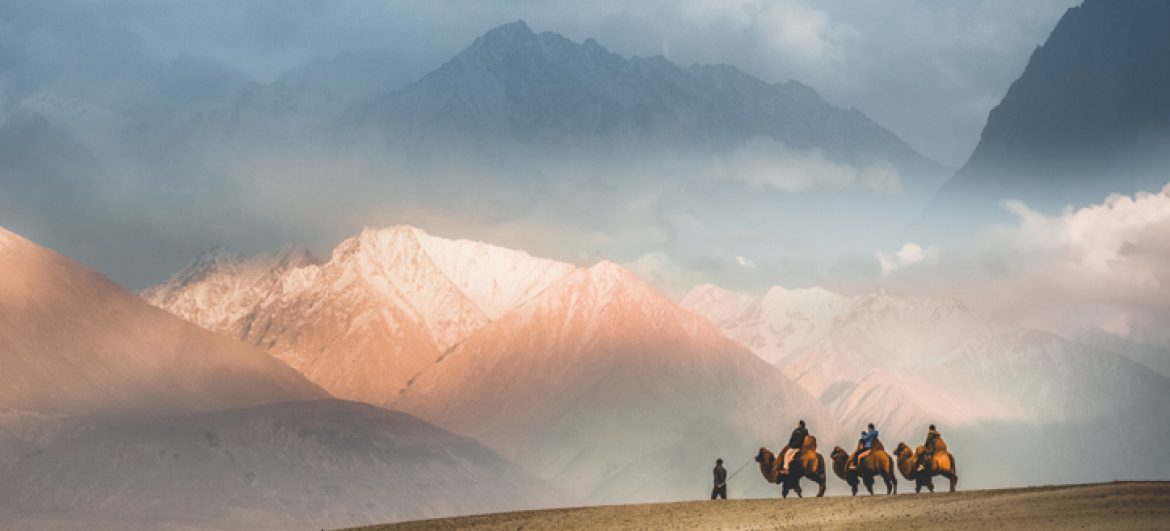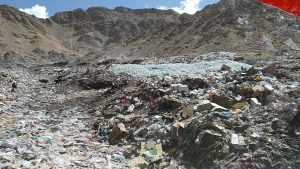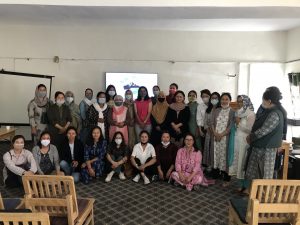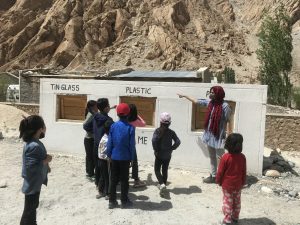Quis autem velum iure reprehe nderit. Lorem ipsum dolor sit nulla or narjusto laoreet onse ctetur adipisci.

Story of Waste in the Desert Mountains of Ladakh
Ladakh is the land of high passes and desert mountains in the Trans-Himalayan region of India. Extreme winter conditions and poor quality of roads have made this region a hard place to live. However, this has also made the Ladakhis one of the most climate-hardened and resilient people on the planet.
Waste is not a concept that Ladakhis were very familiar with until very recently. The region has seen exponential growth in tourism, thanks to better road and air connectivity in recent times. This boost in tourism has not only brought economic prosperity to the region but has also facilitated the influx of various commercial items and products such as Tetrapack Milk, Canned Juices, etc. which the weather hardened Ladakhis are now turning to for a more convenient and comfortable lifestyle. This has resulted in waste becoming a growing and serious problem for the region.
Along with the waste generated by the locals in Ladakh, high volumes of waste left behind by tourists have exacerbated the situation. The greater influx of tourists also means high carbon emissions that the region had never experienced before.

Ladakh, which never needed a dumping site, now has one in the Bombgarh area situated approximately 1.5 km from Leh city. Here waste gets dumped unsegregated and untreated. This means that hospital waste, waste from restaurants, household waste, etc., all get dumped together. This site has now become a breeding ground for both feral dogs and diseases.
Overbreeding and aggressive feral dogs have become a huge threat to wild animals such as brown bears, snow leopards, blue sheep, and many other endangered species. These dogs attack and kill wild animals. The region has seen a sharp decline in the numbers of these indigenous fauna.
Clearly, the problem of waste in this region has snowballed into an accumulation of various other problems, including soil pollution, air pollution, and ecosystem imbalance. Combined and serious efforts involving the local governments, Ladakhis, and responsible tourists answer this problem.
Navikru Eco Foundation (a subsidiary of Little Green World) based in Ladakh is passionately working towards a solutions-based, inclusive approach to tackle the waste problem in the region. The Foundation believes that all stakeholders involved have an equal and vital part to play. Stakeholders, including the future generations, i.e., students in Ladakh, should be made aware of the issues surrounding waste and their role in it.
Navikru Eco Foundation has been selected as a Sustainability Educator to anchor the Wipro earthian program in the region. Their role is to take the Wipro earthian program to schools in Ladakh, and train the teachers and students in the three themes of Waste, Water and Biodiversity. This activity-based sustainability education program brings necessary and impactful learning experiences to these students, which is the need of the hour.

Navikru has conducted teacher training in Leh and Zanskar, introducing the theme of ‘Sustainability & Waste’ to Middle and Higher Secondary School students. To make the program easy to understand and accessible in their language, they have developed e-training modules in Ladakhi, and made them available on Little Green World’s YouTube Channel. (Link)
Post these training sessions, students from these schools have commenced the different activities. It has been observed that the ‘Waste Scavenger Hunt’ activity from the Waste Booklet has had a huge impact on them.
Sharing her experiences, Ms. Sonam Chondol, General line Teacher of Mahabodhi Residential School, says, “Mahabodhi Residential School has been focusing on providing its students’ knowledge about sustainability and climate change, and the Wipro earthian Program just came in as a handy tool to explain these global problems. Four teachers are guiding eight enthusiastic students, divided into two groups, to perform each activity of the ‘Sustainability & Waste’ theme. The students of the Mahabodhi Residential Schools have come up with names for their group, such as ‘Nature Healers’ and ‘Scavengers.’
For the first activity, ‘Waste Scavenger Hunt’, Sindhu Ghat, a touristy hangout place for locals, was selected. Sindhu Ghat is of religious importance for Hindus and is also one of the most littered places.
Students found a lot of waste on the Ghat, and they cleared a majority of the portion. They filled in almost three and a half sacks with waste. The waste found on the Ghat majorly included plastic bottles, food packaging wrappers, disposed masks, etc. This accumulated waste gave the students a glimpse into the waste crisis.
Students then filled the waste scavenger hunt worksheet given in the booklet. This made them think and further reflect on the resources utilized in each item of waste they found. Generally, post disposal waste is considered a problem. But it is important to understand the entire life-cycle of a product as well. This includes insights into the resources utilized for its production and how post disposal and the production process can also be polluting.

This activity has encouraged these students to make mindful choices in their daily life and also share this knowledge with their family and friends.”
The Navikru team has had more such stories of students gaining impactful and meaningful experiences from schools in which they have introduced the program. They aim to take this program to more schools in Ladakh and its neighboring regions. As the problem of waste grows, the need for such programs also increases, and Navikru is hoping to meet that demand.
The organization hopes that the students will learn and understand the problem of waste and its impact on their land and animals and eventually demand a cleaner Ladakh. They hope that they will work collectively towards a better waste management system to avoid issues such as in Bombgarh from occurring in the future.
